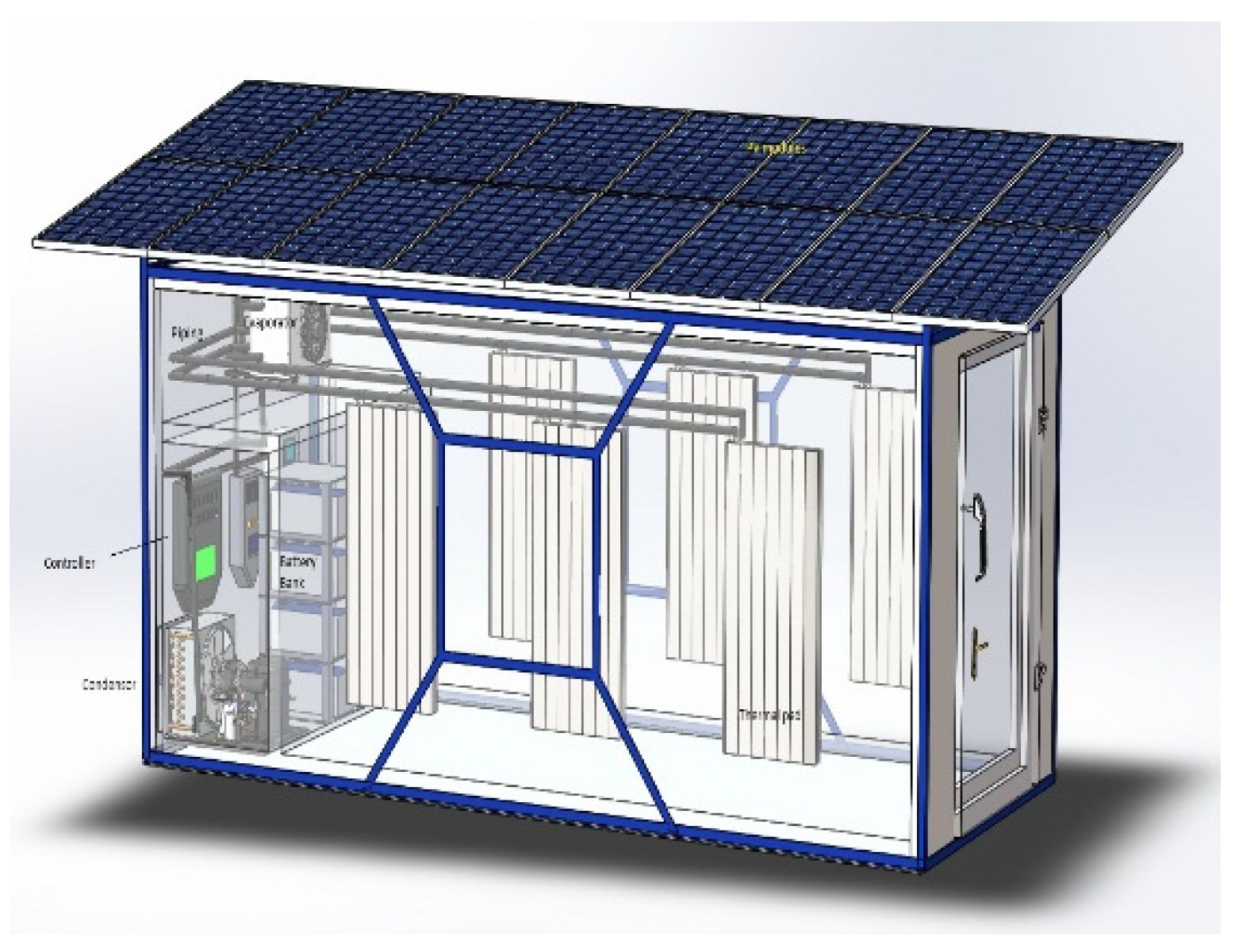Thermal Analysis of a Solar Assisted Cold Storage Unit for the Storage of Agricultural Perishables Produce †
Abstract
:1. Introduction
2. Methodology
3. Results and Discussion
4. Conclusions
- Cooling Load (Q) was calculated to be in the range of 3–18 kJ/s.
- Exergy inflow and outflow rates were found in the ranges of 0.97–3.65 kJ/s and 0.16–1.4 kJ/s, respectively, while exergy destruction was 0.8–2.25 kJ/s, leading to an exergetic efficiency of 40–60%.
- Energy Utilization Ratio (EUR) was calculated to be 0.37–0.80 with a system Coefficient of Performance (COP) value of 3.95.
- Total electrical consumption to attain 4 °C in 9 h was 6.179 kWh.
Acknowledgments
Conflicts of Interest
References
- Alghool, D.M.; Elmekkawy, T.Y.; Haouari, M.; Elomri, A. Optimization of design and operation of solar assisted district cooling systems. Energy Convers. Manag. 2020, 6, 100028. [Google Scholar] [CrossRef]
- Chidambaram, L.A.; Ramana, A.S.; Kamaraj, G.; Velraj, R. Review of solar cooling methods and thermal storage options. Renew. Sustain. Energy Rev. 2011, 15, 3220–3228. [Google Scholar] [CrossRef]
- Amjad, W.; Hensel, O.; Munir, A.; Esper, A.; Sturm, B. Thermodynamic analysis of drying process in a diagonal-batch dryer developed for batch uniformity using potato slices. J. Food Eng. 2016, 169, 238–249. [Google Scholar] [CrossRef]



Publisher’s Note: MDPI stays neutral with regard to jurisdictional claims in published maps and institutional affiliations. |
© 2021 by the authors. Licensee MDPI, Basel, Switzerland. This article is an open access article distributed under the terms and conditions of the Creative Commons Attribution (CC BY) license (https://creativecommons.org/licenses/by/4.0/).
Share and Cite
Amjad, W.; Akram, F.; Rehman, S.; Munir, A.; Manzoor, O. Thermal Analysis of a Solar Assisted Cold Storage Unit for the Storage of Agricultural Perishables Produce. Eng. Proc. 2021, 12, 24. https://doi.org/10.3390/engproc2021012024
Amjad W, Akram F, Rehman S, Munir A, Manzoor O. Thermal Analysis of a Solar Assisted Cold Storage Unit for the Storage of Agricultural Perishables Produce. Engineering Proceedings. 2021; 12(1):24. https://doi.org/10.3390/engproc2021012024
Chicago/Turabian StyleAmjad, Waseem, Fatima Akram, Sidrah Rehman, Anjum Munir, and Owais Manzoor. 2021. "Thermal Analysis of a Solar Assisted Cold Storage Unit for the Storage of Agricultural Perishables Produce" Engineering Proceedings 12, no. 1: 24. https://doi.org/10.3390/engproc2021012024
APA StyleAmjad, W., Akram, F., Rehman, S., Munir, A., & Manzoor, O. (2021). Thermal Analysis of a Solar Assisted Cold Storage Unit for the Storage of Agricultural Perishables Produce. Engineering Proceedings, 12(1), 24. https://doi.org/10.3390/engproc2021012024







